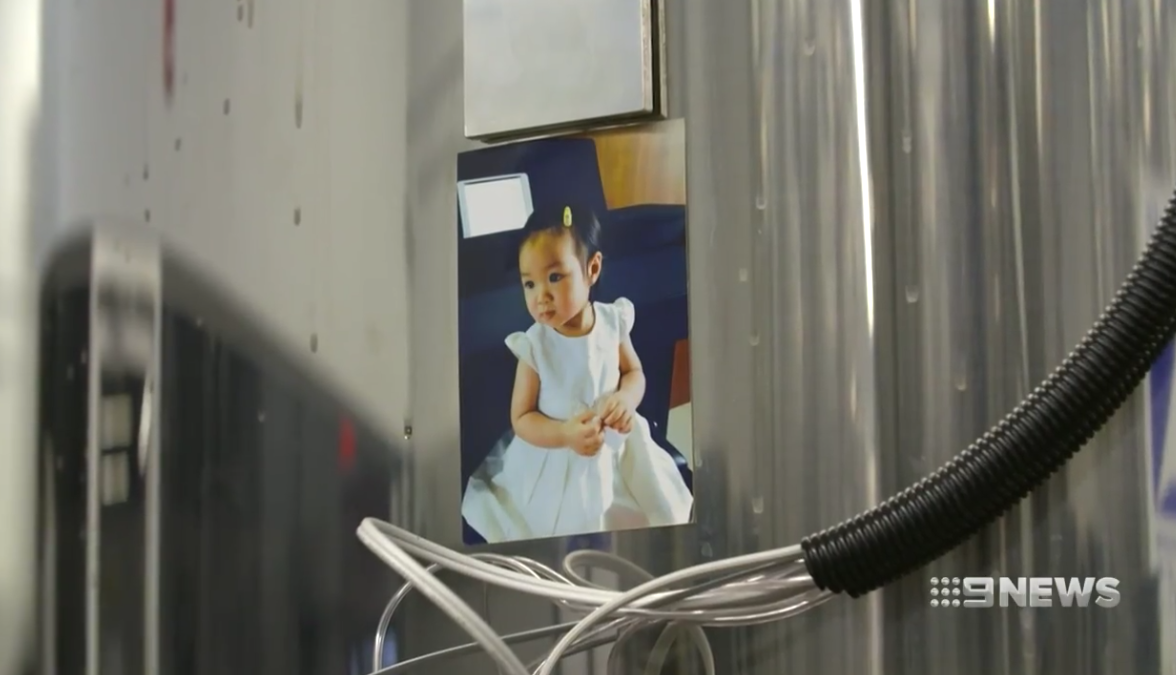
It may not be an option many people would ever consider – with some simply not believing it could be possible beyond movies – but people right around the world are continuing to pay hundreds of thousands of dollars to have their bodies frozen in the hopes they may one day be brought back to life.
And now Nine News have taken cameras behind closed doors at a US cryonics lab, revealing what really goes on when you or a family member choose to have your body preserved in liquid nitrogen after death. Co-founder of Alcor Life Extension Foundation, Linda Chamberlain, showed the camera crew round the vast lab filled with liquid nitrogen-filled vats, revealing her own mother, husband and father-in-law are inside one.
“We do have a mother in Australia who sends a birthday card to her son every year,” she said, revealing they have around 170 patients of all ages there – including a toddler and family pets. “Dogs and cats primarily, [but] we do have one turtle and one chinchilla!” she explained.
Linda founded the company with her late husband Fred, who is now kept inside one of the vats himself following his death in 2012. She added: “I’m in and out of here every day and every now and then I’ll look over and give him a hug or a wink!”

The idea of cryonics has previously been shown in movies such as Austin Powers, but rather than trivialising it, Alcor CEO Max More insisted seeing the process on screen could actually normalise it for many people. “I don’t think it stigmatises it, I think it actually makes it seem more plausible,” More said.
Around 1250 Alcor members are currently signed up for the service from right round the world, including Australia and the UK, and Nine explained they would have the choice of paying AU$300,000 to freeze their entire body, or just their brain for AU$118,000. While there’s no guarantee it will ever work, More insisted many people believe it’s worth risking it for even the smallest possibility.
While Chamberlain’s family have all had their entire bodies frozen, More is planning to preserve his brain only, saying: “My initial thinking was, ‘Which part of me matters most?’ and the answer pretty clearly is the brain, because that’s where my personality is.”
Meanwhile, members are asked to sign a nine-page consent form before being accepted by the foundation, with Chamberlain adding on camera: “We tell people everything that could possibly go wrong … and that’s extremely important because what we are doing is still experimental and people need to know that.”
According to Alcor’s website, the foundation is “the world leader in cryonics, cryonics research, and cryonics technology”. It goes on to explain: “Cryonics is the practice of using ultra-cold temperature to preserve a human body with the intent of restoring good health when the technology becomes available to do so. Alcor is a non-profit organization located in Scottsdale, Arizona, founded in 1972.”
The youngest member is a two-year-old Thai girl who tragically died of brain cancer. Her parents are both research scientists, so chose to sign her up. Chamberlain explained around 10 or 15 people from her family flew to the States to hold a Buddhist ceremony for her at the time.

Revealing the process from the start, the crew followed More as he “stabilised” and then transported the body to the foundation’s headquarters in Arizona. If the whole body is being frozen, a surgeon then opens up the chest to access the major blood vessels of the heart, cannulate them, and then “connect the vascular system to a pump and chiller,” More revealed. Rather more chillingly, to preserve a brain alone, the head is separated from the body before following the same steps – replacing all fluids with cryoprotectant.
The bodies and brains are then kept upside down in the vats, in the hopes they will one day be brought back with the same DNA when advances in science and cures for certain diseases are discovered. Alcor currently has three Australian bodies, with another 12 signed up. Aussies would have to pay a $14,000 surcharge for being out of the country. Chamberlain also warned the longer a body is kept out of the vat after death, the less likely future success would be.
The first person to ever have their body cryopreserved after death was American professor James Bedford, whose body still remains frozen at the Alcor Life Extension Foundation. A new Aussie lab was announced earlier this year by Cryonics pioneer Peter Tsolakides, founder of non-profit organisation Southern Cryonics.